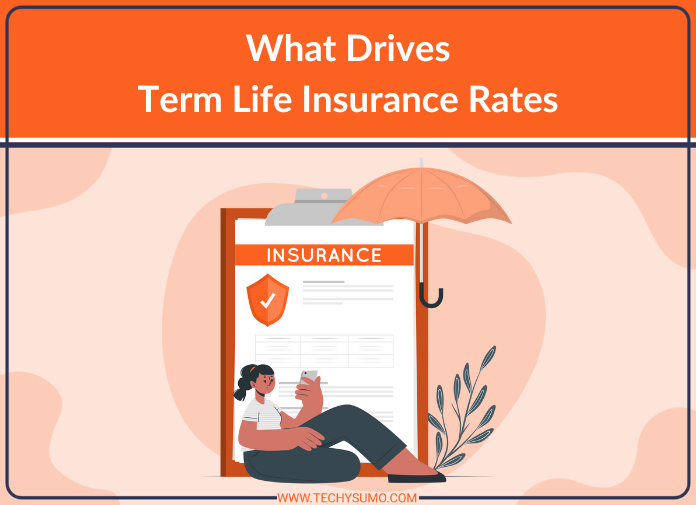Navigating the environment of term life insurance might seem like completing a jigsaw with ever-shifting elements. As 2025 approaches, knowing the variables driving term life insurance prices becomes crucial for acquiring inexpensive coverage. From aging demographics to breakthroughs in health technology, this article unpacks the fundamental variables affecting premiums in the foreseeable future—and how to keep ahead of them.
Table of Contents
- Factors That Drives Term Life Insurance Rates
- The Unyielding Influence of Age
- Health: The Variable You Can (Partly) Control
- Economic Forces: Interest Rates and Inflation
- Technological Disruption in Risk Assessment
- Policy Customization: Term Length and Coverage
- Lifestyle Choices: Beyond Smoking
- Family Medical History: The Hidden Influencer
- Genetic Testing: A Double-Edged Sword
- Regulatory Changes on the Horizon
- Occupation and Hobbies: Beyond the Desk Job
- Common Mistakes to Avoid in 2025
- Strategies to Outsmart Rising Rates
- The Future of Term Life Insurance
Factors That Drives Term Life Insurance Rates
The Unyielding Influence of Age
Age is the cornerstone of term life insurance pricing, and its significance will further deepen by 2025. Insurers depend on actuarial data demonstrating that mortality risk grows with each passing year. For example, a 35-year-old non-smoker would pay 65 monthly for a 1 million insurance, but a 45-year-old might see premiums double to 135 for the same coverage. Delaying a purchase by a decade might cost over 8,400 more over a 10-year period.
By 2025, insurers may develop age-based pricing models further, adding predictive analytics to examine lifespan trends. Younger applicants will continue to benefit from cheaper rates, but competition among insurers might lead to more specialized policies for older groups wanting shorter durations.
Health: The Variable You Can (Partly) Control
Health is a dynamic component in setting term life insurance prices, and 2025 will certainly expand its importance. Advances in wearable technology and genetic testing might transform underwriting. Insurers may combine real-time health data from fitness monitors, giving savings to policyholders who maintain active lives or accomplish particular biometric targets.
However, pre-existing diseases and lifestyle decisions like smoking will still count strongly. A 40-year-old non-smoker may acquire a 1 million coverage for 2,172 yearly, whereas a smoker might pay up to three times more. By 2025, expect insurers to punish avoidable health risks more harshly while rewarding proactive wellness practices.
Also Read
Economic Forces: Interest Rates and Inflation
The economy’s heartbeat—interest rates—profoundly influences term life insurance rates. Insurers invest premiums in bonds and other low-risk assets; as interest rates rise, they may offer cheaper premiums. Conversely, static or declining rates typically lead to greater prices for customers.
In 2025, if central banks continue tighter monetary policies to fight inflation, insurers may stabilize or lower rates. However, economic instability might also promote more flexible term alternatives, such as adjustable-rate policies that fluctuate with market circumstances.
Technological Disruption in Risk Assessment
Artificial intelligence (AI) and big data are set to alter underwriting by 2025. Algorithms studying social media activity, shopping habits, or even driving trends might augment standard medical checks. For instance, a cautious driver with a clean digital footprint can qualify for lower charges.
This trend might democratize access to inexpensive plans but also create privacy issues. Insurers will need to combine innovation with openness to preserve customer confidence.
Policy Customization: Term Length and Coverage
Choosing the correct term length and coverage level is comparable to customizing a suit—ill-fitting selections cost more. A 20-year term may fit a parent with small children, while a 30-year term might better serve someone with long-term debt. Overestimating coverage requirements, however, inflates premiums needlessly.
By 2025, insurers may offer more modular plans, enabling clients to alter coverage dynamically as life milestones—like paying off a mortgage or retiring—unfold.
Lifestyle Choices: Beyond Smoking
While smoking remains a premium enhancer, other lifestyle issues are gaining momentum. Extreme hobbies (e.g., skydiving), high-stress employment, or bad nutritional habits might attract additional attention. Insurers may establish discounts for vegetarians, mindfulness practitioners, or people with low-risk jobs.
Quitting smoking at least a year before applying might save thousands yearly, a trend expected to endure in 2025.
Family Medical History: The Hidden Influencer

While genetic testing remains contentious, family medical history will have a small but substantial effect in term life insurance prices by 2025. Insurers may ask about inherited illnesses like heart disease or diabetes, using this data to determine long-term risk. Applicants with a “clean” family health history might earn reduced rates, while those with hereditary predispositions could face harsher underwriting. Proactive candidates might counter this by emphasizing preventative treatment, such as frequent checkups or lifestyle adjustments, to indicate decreased risk.
Genetic Testing: A Double-Edged Sword
As genetic testing becomes mainstream, insurers may use this data to detect predispositions to chronic illnesses. While this might cut prices for people with “favorable” DNA, ethical problems surrounding discrimination will generate regulatory disputes. By 2025, laws may limit genetic data usage, but its influence on underwriting could still loom.
Regulatory Changes on the Horizon
Governments worldwide are strengthening restrictions to safeguard consumers. By 2025, stronger limitations on age-based pricing or regulations for mental health coverage might transform term life insurance costs. Conversely, deregulation in certain locations could stimulate competitive pricing and creative goods.
Occupation and Hobbies: Beyond the Desk Job
Insurers are scrutinizing professions and hobbies with fresh intensity. A corporate lawyer might enjoy standard rates, while a firefighter or offshore oil rig worker could see premiums rise by 10–20%. Similarly, hobbies like rock climbing or scuba diving may trigger “high-risk” surcharges. By 2025, insurers might introduce tiered pricing for niche occupations or offer waivers for those who suspend risky activities during the policy term.
While understanding what drives term life insurance rates is essential for making informed financial decisions, it’s just as important to be prepared for the emotional and practical challenges that come with a tragic loss. In our related blog, “What to Do After a Tragic Life Loss,” we offer compassionate guidance on the steps to take in the aftermath of losing a loved one. Together, these resources provide both preventative insight and supportive direction for life’s most difficult moments.
Common Mistakes to Avoid in 2025
- Waiting for Milestones: Delaying a purchase until marriage or parenthood risks higher premiums. Locking in rates early shields against age and health changes.
- Overlooking Employer Plan Gaps: Employer-sponsored plans often provide insufficient coverage. A personal policy ensures continuity during job transitions.
- Assuming Immortality: Health can decline unexpectedly. Securing insurance while healthy guarantees better rates.
Strategies to Outsmart Rising Rates
- Leverage Technology: Use apps to track fitness goals and share data with insurers for potential discounts.
- Bundle Policies: Combining life insurance with auto or home coverage might unlock multi-policy discounts.
- Annual Check-Ups: Regular health screenings can catch issues early, preventing premium hikes.
The Future of Term Life Insurance
By 2025, term life insurance will likely blend tradition with innovation. While age and health remain pivotal, technology and regulation will introduce new variables. Consumers who stay informed, prioritize health, and lock in rates early will navigate this evolving landscape with confidence. Final Insight: Treat life insurance as a living asset. Reassess needs annually, adapt to new products, and let 2025 be the year your financial foresight pays dividends.






